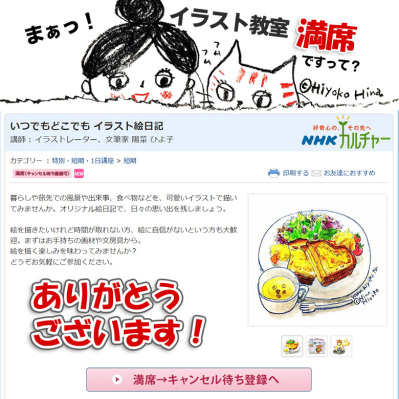2020年9月1日「幸田文生誕 116 周年」のGoogle

幸田 文(こうだ あや、1904年〈明治37年〉9月1日 - 1990年〈平成2年〉10月31日)は、日本の随筆家・小説家。東京都生まれ。幸田露伴次女。女子学院卒。父露伴の死後、『雑記』『終焉』『葬送の記』などの回想文で文壇に登場。のち小説も書き、『黒い裾』『流れる』などで高い評価を得た。繊細な感性と観察眼、江戸前の歯切れの良い文体が特徴。折々の身辺雑記や動植物への親しみなどを綴った随筆の評価も高く、『こんなこと』『みそっかす』や、没後刊行された『崩れ』『木』などの多数の作品集があり、永い人気を保っている。他に映像化の多い『おとうと』も知られている。日本芸術院会員。
来歴
作家の幸田露伴、母幾美(きみ)の次女として東京府南葛飾郡寺島村(現在の東京都墨田区東向島)に生まれる。1910年、5歳のときに母を、1912年、8歳のときに姉の歌を失う。1912年に父の露伴が児玉八代(やよ)と再婚。1917年に寺島小学校を卒業。東京女子高等師範学校受験に失敗するが、八代のつてにより女子学院に入学。その年の夏休みから露伴による生活技術の教育を受けるようになる。1926年、22歳のときに弟の成豊(しげとよ)も失う。
1928年、24歳で清酒問屋三橋家の三男幾之助と結婚し、翌年娘の玉(青木玉)が生まれる。しかし、結婚から8年後、家業が傾き廃業。1936年、築地で会員制小売り酒屋を営む[8]も1938年に離婚、娘の玉を連れ父のもとに戻る。戦時中には、露伴の生活物資の確保のために働き(その一端は青木玉の回想記『小石川の家』(講談社のち文庫化)に詳述されている)、少女時代から露伴にしこまれた生活技術を実践していった。
1947年、露伴死去。露伴の思い出や看取りの記を中心にした『雑記』『終焉』を発表。のち『父』、『こんなこと』、1949年には幼少時の思い出を書いた『みそっかす』を連載するなどの随筆集を出版し注目された。しかし、1950年に断筆宣言をし、翌年柳橋の芸者置屋に住み込み女中として働いたが、病のため約2ヶ月で帰宅する。そのときの経験をもとにして1955年より連載した長編小説『流れる』(1956年刊行)で1956年に第3回新潮社文学賞受賞、1957年に昭和31年度日本芸術院賞を受賞した。また、『黒い裾』で1956年に第7回読売文学賞受賞、『闘』で第12回女流文学賞を受賞した。1976年に日本芸術院会員となった。
1965年の夏、奈良県斑鳩町の法輪寺住職井上慶覚から、焼失した三重塔の再建について話を聞いたことをきっかけに、官公庁への嘆願・申請や募金活動に尽力。その後自らも奈良に移り住み作業にも加わるなどし、1975年に再建された。
1988年5月から脳溢血により自宅で療養。その後は茨城県石岡市の老人ホームに入所。1990年10月29日に心筋梗塞を発症して隣接の石岡第一病院へ入院。2日後の10月31日、心不全により86歳で死去。叙従四位、勲三等瑞宝章追贈。
Today’s Doodle, illustrated by guest artist Yuko Shimizu, celebrates the 116th birthday of Japanese novelist, essayist, and feminist Aya Kōda, widely revered as one of the most luminary Japanese authors of her time. Kōda’s writing eloquently explored topics like familial relationships, gender roles, and traditional Japanese culture, and she came to be closely associated with the appearance of the kimono in her work.
Aya Kōda was born on this day in 1904 in the Japanese capital of Tokyo. Her father, Rohan Kōda, was one of Japan’s most esteemed authors, and Kōda began her writing career at age 43 with an essay about him for a literary journal.
In the 1940s and ‘50s, Kōda honed her captivating style through a series of similarly autobiographical essays that chronicled her life with the eccentric Rohan. Despite her unexpected literary success, she stopped writing for several months to work as a maid at a geisha house. Kōda’s experience among the kimono-clad women there inspired her 1955 debut novel “Nagareru” (“Flowing”), which is cited as a critical turning point in her career.
Today’s Doodle artwork depicts Kōda dressed in a kimono, a subject she examined so frequently that her first 1958-’59 essay collection featured covers made of hand-stitched kimono fabric. In the background of the Doodle artwork is the Horinji Temple found in Japan’s Nara prefecture. The Kōda family had strong ties to pagodas, and when a fire caused by lightning burnt down the original Horinji Temple in 1944, Kōda raised money that helped fund its 1970s reconstruction. Kōda went on to produce a prolific body of work, much of which can be found in her 23-volume, career-spanning collection published from 1994-’97.
Happy birthday, Aya Kōda, and thank you for sharing the fabric of Japanese culture with the world!
https://www.google.com/doodles?hl=ja
google "bird"



